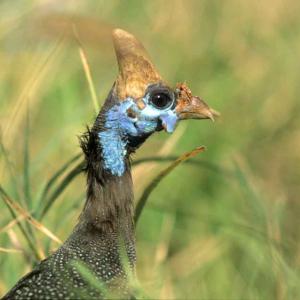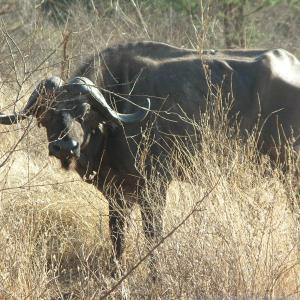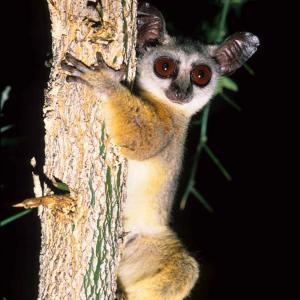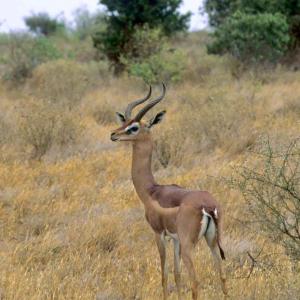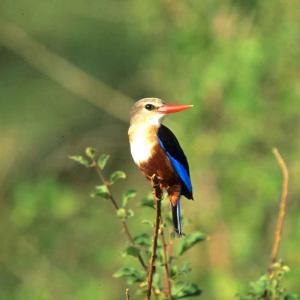``A remote and rugged wilderness``
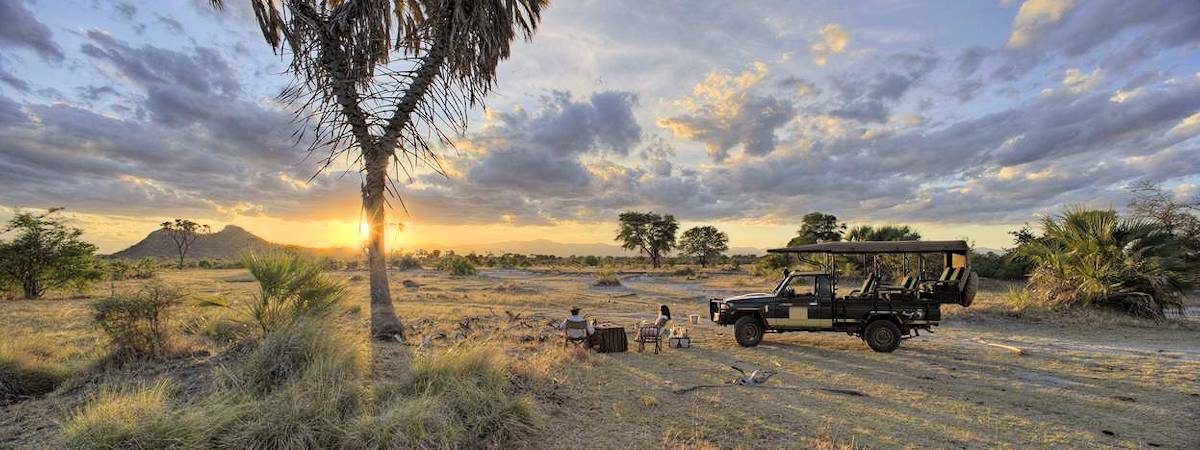
Few places offer a more genuine wilderness ambience than the remote and rugged Meru National Park. Little visited, utterly unspoilt and easily the most geographically diverse Parks in Kenya, it’s the favourite of safari professionals and wildlife experts alike. Brilliantly painted on a magnificent scale, this Park feature luxuriant jungle, coursing rivers, verdant swamp, khaki grasslands, gaunt termite cathedrals and an ever-evolving dance between clouds and sky. This present superb wildlife viewing opportunities.
Fact File
Altitude – Meru: 366-914 meters above sea level.
Area – Meru: 870 sq km
Location – Meru: Meru District, Eastern Province
Distance from Nairobi: 348 km north-east of Nairobi,
Gazetted – Meru: opened 1968
Climate: The Parks are part of the semi-arid zone and have irregular rainfall. The wet seasons are April-June and November-December.
Vegetation: Mainly thorny bushland in the north, wooded grasslands in the west and open grasslands elsewhere. The Parks also feature dense riverine forests of doum and raffia palm.
Wildlife Includes: buffalo, lion, leopard, cheetah, elephant, zebra, rhino, giraffe, hippo, lesser kudu, oryx, gerenuk, hartebeest and gazelle.
Reptiles: python, puff adder and cobra.
Birds: More than 300 recorded species.
Roads: 4WD is essential during the rainy seasons and recommended at other times to best enjoy the Parks.
What to do and See
A classic savannah landscape
A fine example of the classic savannah landscape, Meru’s character is defined by the rivers that form its perimeters: the mighty Tana to the south, the Ura to the south-west and the Rojeweru to the east. The Park is also scored by 15 permanent streams which drain off the nearby Nyambeni Hills.
A rich diversity of habitats
Thanks to the huge diversity of its habitats, Meru offers unique wildlife watching
The northern plains: one of the most rewarding areas for wildlife viewing, the northern plains boast elephant, lion and cheetah. Both species of zebra, Grant’s and Thomson’s gazelle, impala, beisa oryx, kongoni and reticulated giraffe are also easily seen.
The southern plains: the dense woodlands shelter gerenuk, common eland, Kirk’s dik-dik and warthog. They also make an ideal habitat for one of the Park’s highlights, the lesser kudu.
The kopjes: Meru is renowned for its rocky outcrops (known as inselbergs or kopjes), where baboon cavort and leopard lurk among the boulders.
The swampy grasslands: are grazed by Defassa waterbuck and shifting herds of buffalo.
The rivers: Hippo and Nile crocodile are common in the slower streams of the Tana River.
A brilliance of birds
Meru’s birds are abundant and colourful; common river birds include ibis, heron and African fish eagle while the riverine acacia woodland shelters the smallest of the long-tailed sunbirds, the black-bellied sunbird. Flocks of glorious golden-breasted starling are also often encountered as well as loudly honking groups of hornbills. Bird watching here can be very rewarding, making it a birding paradise!
The setting for ‘Born Free’
Meru is where Joy and George Adamson released their most famous lioness, Elsa, back into the wild. Her tale is told in the book and the film ‘Born Free’. The Park was also the site of their later experiments with orphaned cheetahs.
Kora National Park
Meru’s sister Park, the adjoining Kora National Park (1, 787 sq km) is famous as the former home of naturalist George Adamson. A vast area of acacia bushland from whose alluvial plains rise stark granite kopjes and low hills, it is bordered to the south-east by the Mwitamisyi River, which supports an abundance of lizards, snakes, tortoises and crocodiles.
Where to stay
Lodges and tented camps
Elsa’s Kopje Tented Camp: this exclusive lodge offers 9 stone and thatch cottages, international cuisine, swimming pool and game viewing.
Leopard Rock Lodge: overlooking the Murera River, this authentic lodge offers African and international cuisine, swimming pool and game viewing.
Self-catering accommodation
Murera Bandas: Four simple stone chalets located by the main gate.
Bwatherongi Bandas: Four simple wooden chalets, 22 km from Murera Gate and next to the Bwatherongi River.
Camping
The public campsite: 18 km from the Main Gate (near the old Park HQ) this site lies on a stretch of open ground beside a wooded stream. Lavatories and showers are provided.
‘Special’ campsites: a number of ‘special’ campsites are seasonally located along the rivers. Special campsites: have no facilities and must be booked on an exclusive basis (in advance) through the warden or KWS HQ Nairobi.
